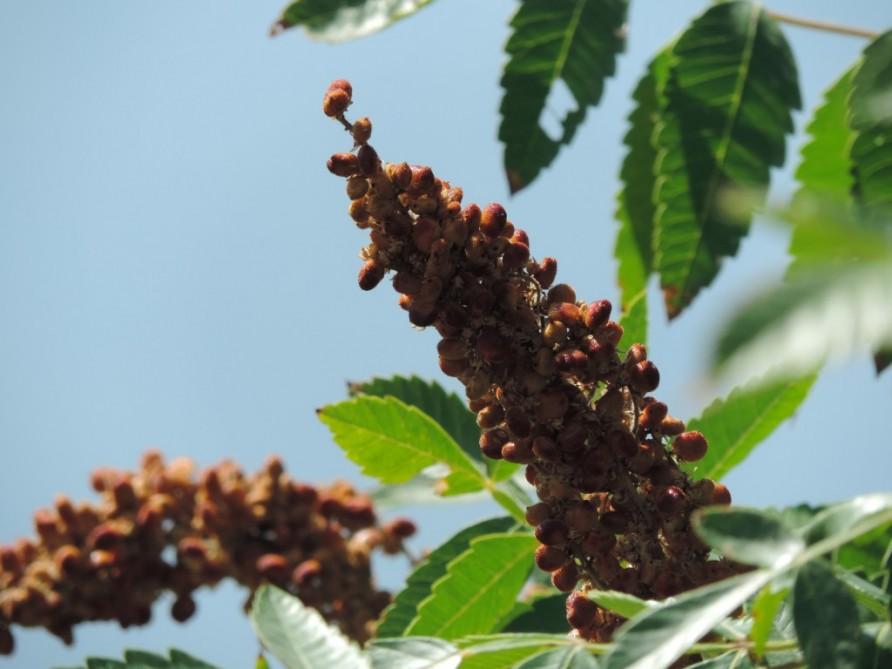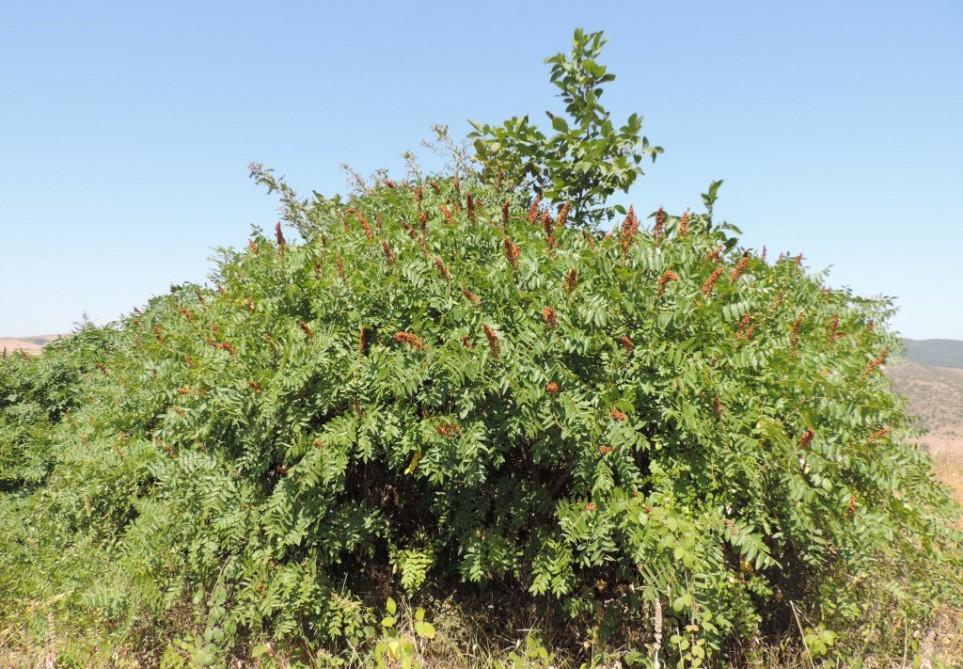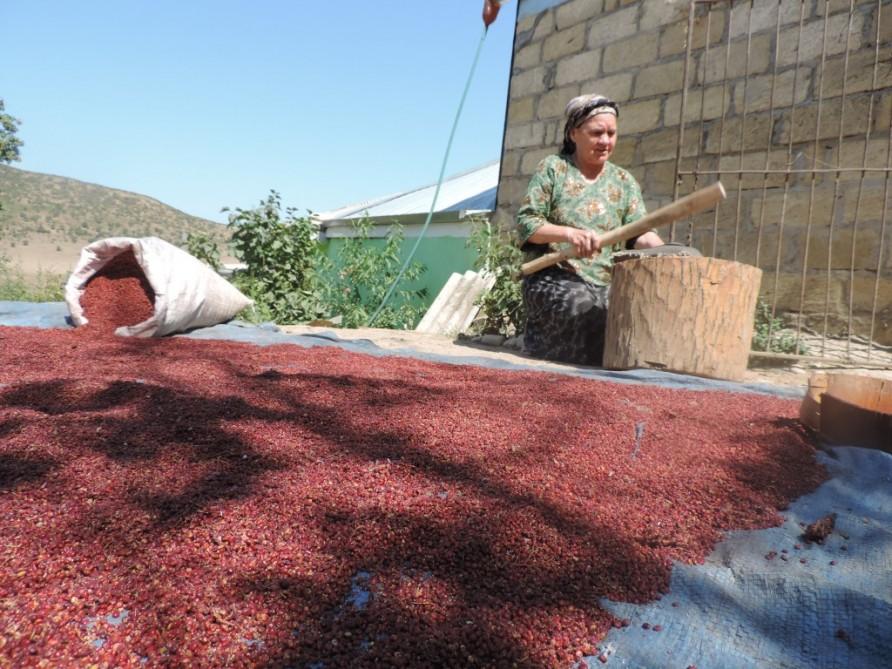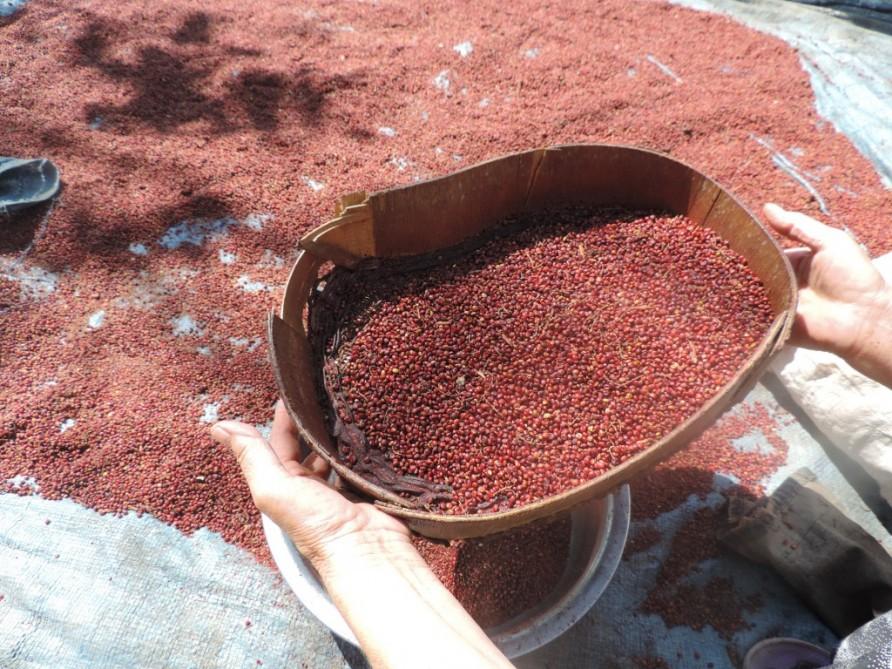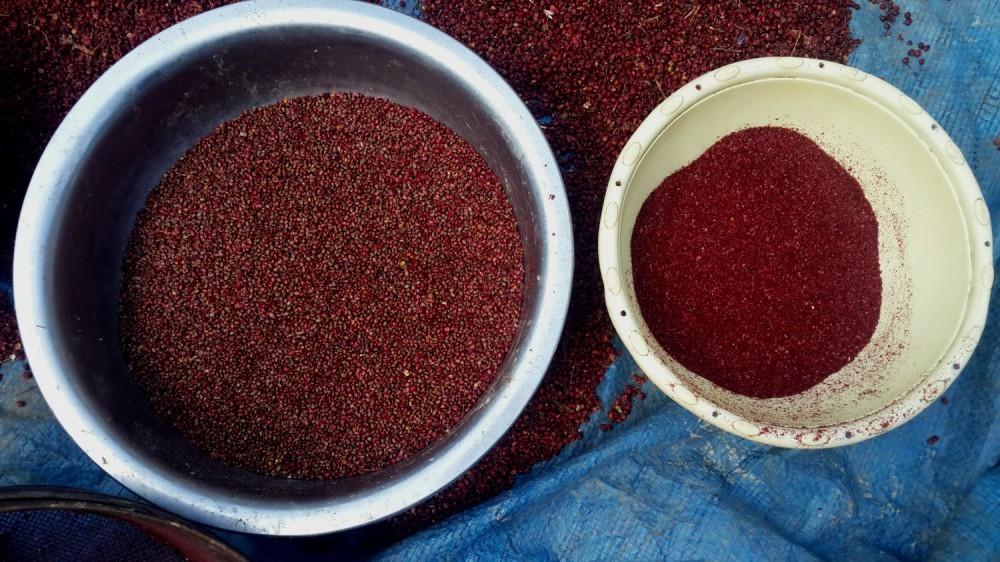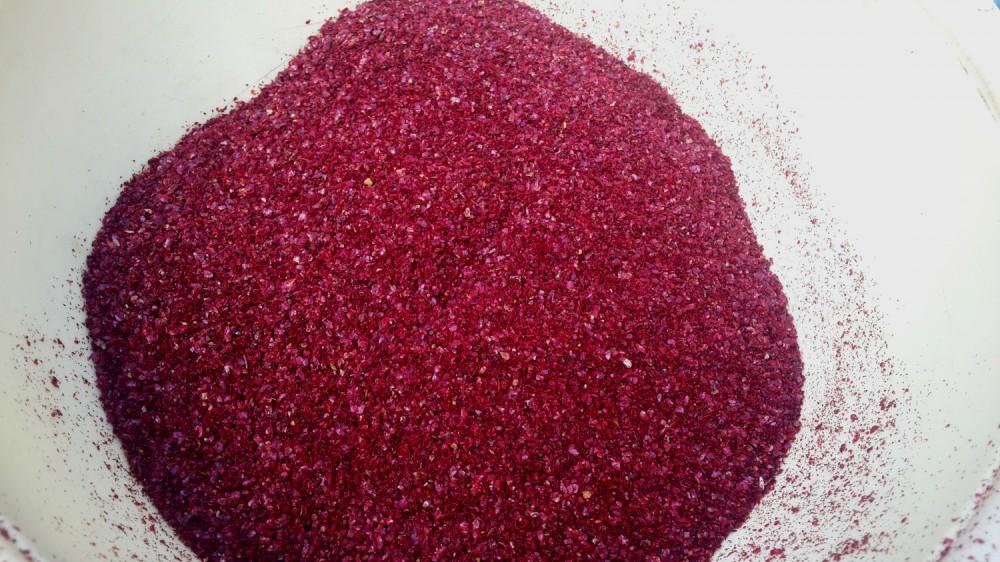How to make sumac spice [PHOTO]
![How to make sumac spice [PHOTO]](https://www.azernews.az/media/2017/09/08/sumac1.jpg)
By Laman Ismayilova
Azerbaijani cuisine boasts a wide range of spices and unique flavors, which make Azerbaijani food truly stand out.
A wide variety of spices is used in Azerbaijani cooking to create rich, flavorful and zesty dishes and sweets. One of these spices is sumac, the native tree whose red-berried cones are reaching their zenith of flavor in August.
Early August is the time to harvest sumac, as rain can wash away much of the flavor and vitamin C.
The citrusy, berry-like, bracingly tart flower is composed of individual drupes, similar to the little drupes that make up the knobbed appearance of common raspberries and blackberries. The plant also gives us a spice, derived from the seed inside each drupe which is dried and ground into a red powder.
This spice has been used for thousands of years, particularly in the Middle East and Near East, as well as North Africa. It adds a sour note and a beautiful red color to food.
About 250 species of this spice grow in Azerbaijan’s Guba, Lankaran, Goychay, Sheki and Zagatala regions.
It’s better to harvest the sumac berries at their peak when the berries are a dark red. Then, berries are dried in a cool dark place for a week or two, as this makes the spice much easier to separate from the seeds. When they are dry enough, berries need to be grinded into a fine powder.
This reddish plant is an essential ingredient in the national cuisine and can be used in a variety of manners.
No feast would be complete without juicy kebab, cooked of lamb or sturgeon, seasoned with this reddish spice. And sumac sprinkled over hot qutabs is must try.
You could also add sumac to yogurt or to season sweet potato fries or chips.
The plant has a range of health benefits. Sumac is an excellent source of organic acids, myricetin, anthocyanin, kaempferol, gallotannis, flavones, phenolic acids, malic acid, hydrolysable tannins, anthocyanin, citric acids, etc., which are all beneficial to human health.
A study has discovered that sumac has antimigratory activity which helps prevent and treat atherosclerosis, a deadly coronary artery disease. The tannin acid which is released by boiling the berries has been found to treat vascular smooth muscle cell migration.
Antioxidants are one of the biggest health benefits of the spice. It neutralizes the free radicals that can cause cancer, heart disease, and signs of aging.
This dried powder can also help to normalize blood sugar levels for diabetes and pre-diabetes.
Moreover, sumac has anti microbial properties. A study published in International Journal of Food Microbiology suggested sumac’s antimicrobial activity that can combat Salmonella bacteria.
Traditionally infusion of sumac bark/rooks or sumac tea is used as cure for women disorders.
To summarize, health benefits of sumac can be mainly attributed to its anti microbial, antioxidant and anti-inflammatory properties
.---
Laman Ismayilova is AzerNews’ staff journalist, follow her on Twitter: @Lam_Ismayilova
Follow us on Twitter @AzerNewsAz
Here we are to serve you with news right now. It does not cost much, but worth your attention.
Choose to support open, independent, quality journalism and subscribe on a monthly basis.
By subscribing to our online newspaper, you can have full digital access to all news, analysis, and much more.
You can also follow AzerNEWS on Twitter @AzerNewsAz or Facebook @AzerNewsNewspaper
Thank you!

